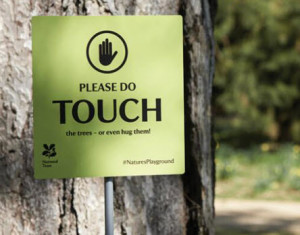-
The National Trust Movement
Posted on May 23, 2014A movement that can change our future by caring for and about our past
All of us involved in INTO are fortunate in so many ways. We are fortunate because we are involved in the biggest conservation movement in the world. The biggest and in my mind the most successful and most positive. We are part of a global movement with nearly 8 million members. A movement that unites people in their concern for our heritage, the world’s heritage. The National Trust movement cares about Special Places, as defined by their communities. Special places can be historic buildings and monuments, they can be natural areas of remarkable beauty, they can be landscapes, they can be farmlands and open spaces. More recently trusts have recognized the importance of Intangible heritage which includes customs, languages, skills and our way of living. This concern was expressed in the THE VICTORIA DECLARATION (2011) and in the Entebbe-Declaration (2013).
Our movement cares about protecting these special places for ever and it cares about protecting them for everyone. Every ‘National Trust’ is different. There is no ‘right’ model (that is one of the advantages we have). Small islands, small countries and developing nations face different challenges than do huge organizations.
Every National Trust has its own history, its own focus and its own special places. But every one of these trust brings that special excitement that comes from valuing places, about heritage both tangible and intangible, about beauty, about wonder.
National Trusts are about connecting people to their heritage. They are about involving communities in their past though caring for and about those places, those skills, those traditions that make communities whole. In doing so, in involving communities National Trusts insure that communities will care, will value and will protect these special places and special traditions. It is only though communities caring that these special things will survive into the future.
I believe very strongly that communities can change the future of their cities, their countries by being involved, by caring about the special places that matter.
The Ross Bay Villa in Victoria British Columbia Canada is a classic example to illustrate the value of community involvement. Ross Bay Villa was built in 1865 and as such is one of the oldest buildings in British Columbia. In 1999 it was in a terrible state and its owners had requested permission from the city government to demolish it. Instead the Villa was purchased by a partnership including the local trust and this was the beginning of a 14 year restoration project.The project has been done almost entirely by volunteers, working about 4 hours each Saturday for 14 years. The physical results are amazing. But the community results are even more important. About 250 volunteers have donated nearly 70,000 hours to this project. Friendships have been created, children have been born and come to volunteer. The community value is priceless.
On a global scale, caring communities, working together, caring about the world as a very special place can bring us to a better future. In my mind the National Trust Movement is the only force that has the ability to make the future better on the scale we need to do so to make a difference.
Of course we are continually creating our heritage. History did not stop at some magical time. National Trusts can and do capture our contemporary history in protecting and making available the places of our recent past. Some such places trace our architectural DNA through modernism for example. Some special places are special not because they are grand but because they can serve to remind us of our humble beginnings, of our errors and our horrors. They help us to remember and not to repeat mistakes.
On the other hand trusts can lead the way in changing our future. In England and in the United States the National Trusts are leaders in adapting new technologies to reduce our climate footprint. The National Trust (EWNI) has been talking about Climate Change and its impacts since as early as 1995 and it has been not only talking but it has been doing. Programs like the Fit4Future partnership (created by the National Trust (EWNI) showcase energy saving adaptations in a way that few other organizations could or would attempt.
So how did this movement, this Big Idea, begin? It began more or less independently in Norway and in North America in the late 1800’s. The first land trust was the Trustees of Reservation in Massachusetts. The origin of The Trustees of Reservations can be traced to March 5, 1890, when the New England periodical Garden and Forest carried a letter entitled “The Waverly Oaks.” The article spoke of the tragedy that it would be if this grove of magnificent oaks were to be felled. That letter inspired a group of citizens to form the Trustees of Reservations with the goal of saving this special place forever for everyone.
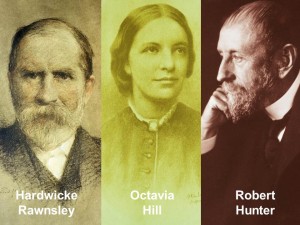 The National Trust for Places of Historic Interest or Natural Beauty (England, Wales, Scotland and Ireland) was founded in 1895 by three community activists: Octavia Hill, Canon Rawnsley and Sir Robert Hunter. Sir Robert Hunter drafted and negotiated the first National Trust Act, which was passed by the British Parliament in 1907. This and subsequent acts of the British Parliament established the critical principals of protection of property and governance which have made the National Trust such a success.
The National Trust for Places of Historic Interest or Natural Beauty (England, Wales, Scotland and Ireland) was founded in 1895 by three community activists: Octavia Hill, Canon Rawnsley and Sir Robert Hunter. Sir Robert Hunter drafted and negotiated the first National Trust Act, which was passed by the British Parliament in 1907. This and subsequent acts of the British Parliament established the critical principals of protection of property and governance which have made the National Trust such a success.The National Trust has continued to grow and thrive. Originally it included Scotland and Ireland within its mandate but subsequently Scotland and Ireland became separate Trusts. It has not always been easy but through perseverance the trust has continued from one success to the next. Membership numbers have grown from 226,200 when the Trust celebrated its 75th anniversary in 1970 to 500,000 in 1975, one million in 1981, two million in 1990 and by 2011 the 4 million mark had been passed.
The National Trust (EWNI) has been the model and inspiration for the creation of National Trusts around the globe. Our movement has grown and continues to grow around the world and bringing us very close to 8 million members (the Everyone).
For me, the ‘Everyone’ in our mission is really important, in fact critical. Without the ‘Everyone’ we simply will not succeed. I am convinced that the more holistic we can be the more successful we are. Those who care about one special place are likely to care about other special places.
There are so many things we can and we must do to make our special places important to everyone. I would like to give you some amazing examples. INTACH the National Trust in India has developed many programs to involved people. Most exciting is a program which involves school children making documentary films which are submitted for review by professional film makers. And celebrated in a Film Festival on a significant scale. The program not only teaches the technical aspects of film making but each year the assignments focus on different heritage or conservation issues.
The National Trust in Australia has done a wonderful job of opening up this old jail and making it a place of learning and of excitement. It is one of the most visited and most talked about attractions in Melbourne. I friend of mine (with two small children) visited Melbourne from Canada and this visit to the Jail was the most talked about event of their family trip.
At many successful trust sites costumed staff and volunteers bring historic places to life and make them exciting to all ages. This extra effort pays great dividends.
In most cases now programs and sites are becoming hands on as opposed to the old school approach of ‘hands off’. This transition is not without its challenges not the least of which are the objections of curatorial staff and experienced ‘room stewards’. Despite the challenges such programs are huge successes resulting in a new level of engagement by all. (Including those who initially resist).
A success among successes is the 50 things to do before you are 11 ¾ program. The program involves a special website, special publications, a special look and a very special attitude. Participants are provided a ‘check list’ booklet. These are exciting things, but they are not ‘safe’ things. The National Trust (EWNI) has recognized the need to involve children in nature and outdoor play. The activities push boundaries and get parents involved.
Another part of this over all Child in Nature thinking has resulted in Project Wild Thing. Project Wild Thing is a collaboration. But with its huge membership and huge variety of special places the National Trust is a very critical part of the project. Getting people involved is about having fun. Easter is an example of that fun, but the NT finds many ways to involve its members in particular its families.
Working Holidays involve individual members in a learning experience. Working Holidays are now active globally. Each year there are hundreds of Working Holidays involving literally thousands of volunteers. INTO lists a number of these international opportunities on our website.
This brings me back to the ‘movement’ as represented so well, I believe, by INTO. I want to give you a brief ‘commercial’ message about why I believe that INTO is so important to our movement.
I believe that INTO can and does provide a critical component of this movement. INTO provides that international layer which gives us all more capacity, more strength and assurance that we are not alone. INTO cannot provide the engagement on the ground. That is not and will never be its role. It cannot, itself, protect special places forever for everyone. But INTO can help its members on the ground and help those who wish to establish a national trust in their country in so many ways. INTO is often the catalyst that brings people together, that brings expertise and celebrity to an area.
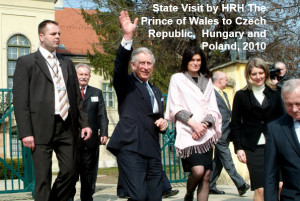 A good example is the tour by HRH Prince Charles several years ago of Eastern Europe. Much has come from this trip, exchanges, return study visits to England and Scotland, funding, the development of several new trusts. Besides connecting people and trusts together INTO provides mentorship, access to best practices and a growing data base.
A good example is the tour by HRH Prince Charles several years ago of Eastern Europe. Much has come from this trip, exchanges, return study visits to England and Scotland, funding, the development of several new trusts. Besides connecting people and trusts together INTO provides mentorship, access to best practices and a growing data base.INTO is a low budget, umbrella group. It has only one paid employee (our wonderful Head of Secretariat, Catherine Leonard) and she is technically a National Trust employee seconded to INTO two days per week. INTO’s office is located within the offices of the NTEWNI. This is actually a very good thing because it insures that we remain grounded in the actual work of trusts. But INTO is actually a Virtual organization. As well as our website (Which is currently available in 5 languages). INTO has a Twitter presence. In fact we have two Twitter accounts, this one in English and one is Spanish. We will have a French Language Twitter site as soon as we recruit a suitable volunteer.
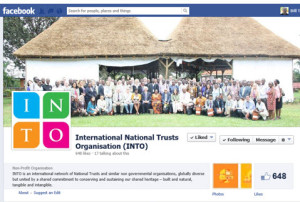 INTO is on Facebook in English and in Chinese and will soon have Spanish and French Facebook Pages.
INTO is on Facebook in English and in Chinese and will soon have Spanish and French Facebook Pages.INTO provides a platform to take issues of global concern to world governments and world fora. In Dublin in 2009 the INTO Congress (which is the assembly of INTO members) unanimously passed the Dublin Declaration on Climate Change. INTO presented this declaration in Copenhagen later that year to the United Nations COP meeting. Whenever possible INTO volunteers have represented the movement at subsequent COP meetings. In 2011 the INTO Congress passed the Victoria Declaration on Climate Change. Since its’ founding INTO through its congress has made it very clear that Climate Change is the greatest threat to our heritage and addressing it is critical to all our trusts.
It is not the big trusts that need INTO to speak for them, they have significant national voices, but our smaller member trusts do not have the resources to present global issues to global audiences. INTO helps speak for them.
INTO is building a database of knowledge – known as a “Knowledge Base” As it grows this knowledge base will hold case studies, best practices and research papers, indexed and with significant search abilities. Did I mention that this knowledge base, like the entire INTO website exists in 5 languages?
Also just in development is the Sustainable Farms program as a component of the INTO website. I hope that we will have this operational by the fall of this year. The program will bring together National Trust farming properties across the globe. By exchanging knowledge through INTO Sustainable Farms, of National Trusts farms and the wider community will learn about food and fiber production whilst concurrently supporting the conservation of natural and heritage resources.How are INTO members different from so many environmental or heritage groups? INTO members have collectively established a set of criteria which help us define a “National Trust”. INTO recognizes that these guide lines must be flexible, but the guide lines help us establish a target.
We believe that much of the strength of National Trusts is the holistic approach to saving special places (and in particular the broad definition of Special Places to include nature, scenic, historic, agriculture and recreation) and the commitment to save these places Forever, and for Everyone. We believe that if the public is not engaged they will not care and if they do not care we can never save these places in the long term. Together, through INTO, we can all share in the pride and satisfaction that comes from knowing that we are making a difference. That the world’s heritage would be at a much greater risk without the work of our trusts, without your dedication to caring for the past and in doing so building for the future.
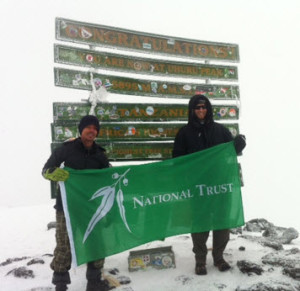
Together we can reach great heights.Thank you all for being a part of this very important global movement. We really can make a better future by caring for our past.

 44 (0)20 7824 7157
44 (0)20 7824 7157
